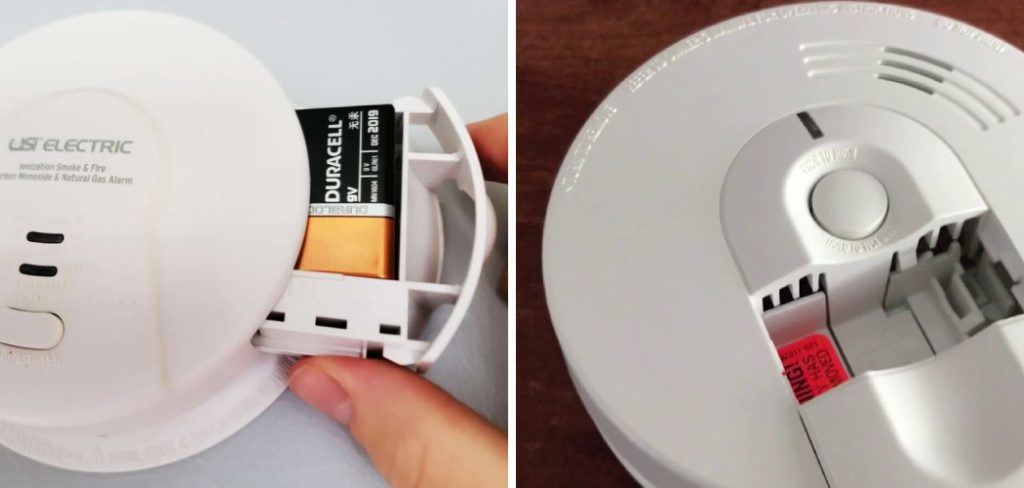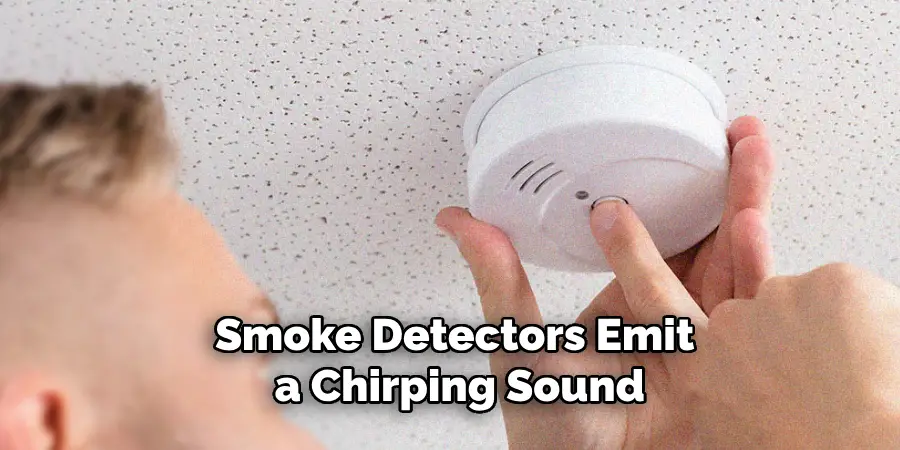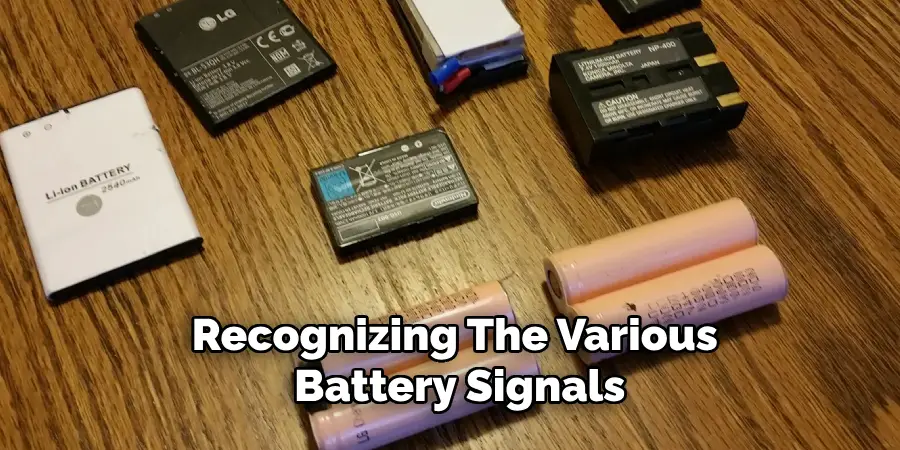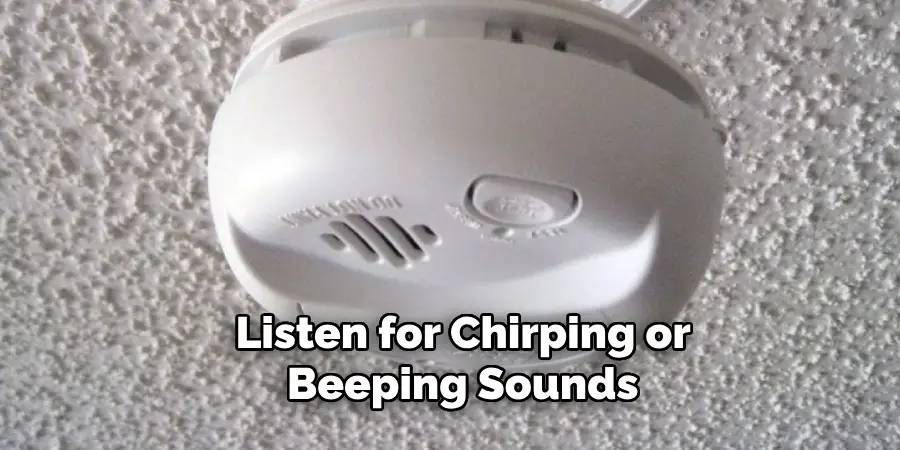Smoke detectors are essential safety devices in every home, designed to alert occupants to the presence of smoke and potential fires. Ensuring they are functioning correctly is crucial for maintaining a safe living environment.

One common issue homeowners face is determining which smoke detector has a low battery. A smoke detector with a low battery typically emits a periodic chirping sound, but identifying the exact unit can be challenging, especially in homes with multiple detectors.
This introductory guide will walk you through the steps to pinpoint the problematic smoke detector. We will cover how to tell which smoke detector has low battery, the use of visual indicators such as flashing lights, and the role of interconnected systems where multiple detectors are linked.
By understanding these signs and utilizing simple troubleshooting techniques, you can ensure that your smoke detectors remain fully operational, providing continuous protection for your home and loved ones.
The Importance of Smoke Detectors
Smoke detectors play a vital role in safeguarding lives and property. They serve as an early warning system, detecting the presence of smoke and alerting occupants before a fire can escalate into a dangerous and potentially deadly situation.
Statistics consistently show that homes equipped with working smoke detectors have a significantly lower incidence of fire-related fatalities.
This is because the early warning provided by these devices allows for timely evacuation, giving families precious extra moments to escape. Additionally, smoke detectors can help to minimize property damage by enabling quicker response times from emergency services.
Investing in reliable smoke detectors and maintaining them properly is one of the simplest yet most crucial steps in ensuring your home remains a safe haven.
Identifying Smoke Detectors with Low Batteries
Tackling the issue of identifying which smoke detector has a low battery requires a systematic approach. Most modern smoke detectors emit a chirping sound when the battery is running low.

However, in a home with several detectors, the sound can be misleading, making it difficult to locate the exact source. To begin with, it is essential to stay calm and methodically check each smoke detector one by one.
Start by standing directly beneath each device and listening closely for the chirping sound. Many detectors are equipped with built-in LED indicators that flash at regular intervals when the battery is low. Observing the lights can be an additional method to identify the problematic unit.
In homes with interconnected smoke detectors, the challenge escalates. Interconnected systems are designed to enhance safety by triggering all alarms simultaneously when smoke is detected in any one unit.
While this feature is beneficial for fire detection, it can complicate identifying which device has a low battery, as the chirp can propagate through the entire network of detectors. In such systems, refer to the manufacturer’s guidance on isolating and pinpointing the faulty smoke detector.
Some advanced models come with a “silence” button or similar feature that temporarily mutes the chirping, allowing you to systematically deactivate one detector at a time to identify the source.
Regular maintenance and periodic testing of smoke detectors are vital practices. Test each unit at least once a month and replace batteries according to the manufacturer’s instructions—usually annually or when you first hear the low battery chirp.
By adopting these habits and understanding the visual and auditory signals of your smoke detectors, you can effectively manage this common household issue, ensuring continuous safety and peace of mind.
Understanding Smoke Detector Battery Signals
Recognizing the various battery signals from your smoke detectors is key to ensuring they function properly at all times. Most smoke detectors are designed to emit a specific chirping pattern when the battery is low, usually a single beep every minute or so.

This is a universal signal across many brands and models, making it easier for homeowners to understand and respond accordingly.
Besides the intermittent chirping, some advanced detectors may incorporate voice notifications stating “low battery” or similar messages to eliminate confusion. Additionally, visual indicators such as a flashing red LED light often accompany the auditory signals, providing a clear and visible alert that maintenance is required.
However, the exact nature of these signals can vary slightly based on the manufacturer. Therefore, it’s always a good idea to consult the user manual specific to your smoke detector model for precise guidance.
Understanding these signals not only helps in maintaining the efficiency of the detectors but also ensures that you can address and resolve battery issues promptly. By doing so, you uphold the safety integrity of your home, protecting your loved ones and property from potential fire hazards.
Common Battery Warning Signals Emitted by Smoke Detectors
Different smoke detectors may have varying ways of alerting homeowners to a low battery, but some common signals are widely recognized across various brands and models.
The most prevalent warning signal is an intermittent chirping sound, which typically occurs once every 30 to 60 seconds. This persistent and distinctive beep serves as a clear indication that the battery needs to be replaced.
In addition to the audible chirp, many smoke detectors feature visual cues, such as a flashing red LED light. This light often blinks in conjunction with the chirping sound, providing a dual sensory warning that is particularly useful in noisy environments or for individuals with hearing impairments.

Some advanced models even employ voice alerts that explicitly state “low battery” or a similar message, removing any doubt about the nature of the warning and ensuring that action can be taken promptly.
Another common signal is the combination of a chirping sound with a slight pause followed by a voice alert or a different tone. This pattern aims to attract attention while conveying the urgency of the situation. It is essential to familiarize yourself with these signals and consult the user manual for your specific smoke detector model to fully understand the meanings behind each alert.
By recognizing and acting on these battery warning signals, you ensure that your smoke detectors remain operational, safeguarding your home and loved ones from the risk of fire.
Importance of Responding Promptly to Low Battery Signals
Responding promptly to low battery signals in your smoke detectors is crucial to maintaining an effective fire safety system within your home. Ignoring or postponing the replacement of low batteries can result in non-functional smoke detectors, leaving your household vulnerable to undetected fires and smoke.
Smoke detectors are designed as the first line of defense, providing early warnings to allow sufficient time for evacuation and emergency response. When the battery is low and the detector’s functionality is compromised, this crucial early warning system is effectively neutralized.
Moreover, smoke detectors that are inoperable due to dead batteries may cause a false sense of security.
Homeowners might believe their homes are protected, while in reality, the detectors are unable to perform their life-saving task. By addressing low battery signals immediately, you ensure that your smoke detectors remain active and reliable, ready to alert you at the first sign of danger.

This proactive approach not only aligns with best safety practices but also enhances the overall protection of your home and loved ones from fire-related incidents. Regular battery maintenance, therefore, should be a high-priority task for every household, underscoring the importance of vigilance and timely response to low battery warnings.
10 Methods How to Tell Which Smoke Detector Has Low Battery
1. Listen for Chirping Sounds:

One of the most common and straightforward methods to identify a smoke detector with a low battery is to listen for chirping or beeping sounds. Most smoke detectors are designed to emit a regular chirping noise when the battery is running low.
This sound is distinct from the alarm that signals smoke or fire; it’s usually a short beep that occurs at regular intervals, often every 30 to 60 seconds. This chirping is an audible alert intended to catch the attention of anyone nearby, signaling that the battery needs to be replaced.
The consistency and predictability of the sound make it easy to pinpoint which detector is in need of maintenance. Walking through your home and pausing in each room to listen for the chirp can help you locate the source. This method is effective both day and night, although it might be more noticeable in the quieter nighttime hours.
2. Visual Inspection of LED Indicators:
Modern smoke detectors are equipped with LED indicators that provide visual cues about their status. When the battery is low, many detectors will flash a red light in conjunction with the chirping sound. This flashing red LED is often synchronized with the beeping, making it easier to identify the problematic unit.
To use this method, turn off the lights in the room to see the LED more clearly, and observe each detector for a few minutes. The steady or intermittent flashing of the LED will direct you to the detector that needs attention. This visual cue can be particularly useful in larger homes where the sound might be difficult to pinpoint exactly.
3. Perform a Manual Test:
Most smoke detectors have a test button that allows you to manually check the unit’s functionality. To find out which detector has a low battery, you can press the test button on each unit in your home. When the test button is pressed, a fully functioning smoke detector will emit a loud alarm sound.
If the alarm sound is weak, delayed, or fails to sound at all, this is a strong indication that the battery is low. By methodically testing each detector, you can identify the one that needs a battery replacement. This hands-on approach ensures that each unit is individually assessed, leaving no room for doubt.
4. Use a Smoke Detector App:
With the advancement of smart home technology, many modern smoke detectors can be linked to smartphone apps. These apps provide real-time updates and notifications about the status of each detector, including battery levels. By opening the app, you can check which detector is reporting a low battery.

This method is especially convenient because it allows you to monitor your smoke detectors remotely. Some apps even send push notifications when a battery is low, ensuring you are alerted promptly even if you are not at home. This technological solution is ideal for those who prefer a more automated and hands-off approach to home maintenance.
5. Check the Expiration Date:
Smoke detectors generally have a lifespan of about 8 to 10 years. As they age, their components, including the battery, may become less reliable. If your smoke detectors are approaching the end of their recommended lifespan, it’s possible that the batteries will need to be replaced more frequently.
Checking the manufacture date, usually found on the back of the detector, can give you an idea of how old the unit is. If it’s nearing or past its expiration date, consider replacing the entire detector rather than just the battery. This proactive approach ensures that your smoke detectors are always in optimal working condition.
6. Use a Multimeter:
For those who are more technically inclined, using a multimeter to measure the battery voltage directly can be a precise method to identify a low battery. To do this, you need to remove the battery from the smoke detector and set the multimeter to measure voltage.

A fully charged 9-volt battery should read around 9 volts. If the reading is significantly lower, it indicates that the battery is depleted and needs to be replaced. This method provides a clear and quantifiable measurement, ensuring that you are not replacing batteries unnecessarily.
It’s particularly useful for those who prefer a definitive, scientific approach to home maintenance.
7. Conduct a Power Reset:
In some cases, performing a power reset on your smoke detectors can help identify the unit with a low battery. This involves turning off the power to your smoke detectors at the circuit breaker and then turning it back on after a few minutes. When the power is restored, listen for any chirping sounds or observe any flashing LEDs that might indicate a low battery.
This method can help reset any false alarms or error signals and bring attention to the detector that requires a new battery. It’s a bit more involved than simply listening for chirps but can be effective in identifying subtle issues.
8. Sequential Battery Replacement:
If you have multiple smoke detectors and are unsure which one has a low battery, a systematic approach is to replace the batteries in each unit one by one, starting with the one most likely to be the culprit based on sound or visual inspection. After replacing the battery, monitor the detector for any chirping sounds. If the chirping stops, you’ve found the right detector.
If not, move on to the next one. This method might take a bit more time and effort, but it ensures that each detector is checked and updated as needed. It also gives you peace of mind that all detectors have fresh batteries.
9. Use an Interconnected System:
Many modern homes are equipped with interconnected smoke detectors, where all units are linked, and if one detects smoke, they all alarm simultaneously.
Some interconnected systems also provide information on battery status. Check the control panel or the main unit of your interconnected system, which often has an indicator for which specific detector has a low battery.
This centralized approach makes it easier to identify and address issues with individual units, saving time and ensuring all detectors are maintained efficiently. This method leverages the interconnected nature of the system to streamline maintenance.
10. Regular Maintenance Routine:
Establishing a regular maintenance routine for your smoke detectors can prevent the hassle of dealing with low battery alerts unexpectedly. Set a schedule to check and replace batteries at least once a year, or more frequently if needed. During this routine, clean the detectors to remove dust and ensure they are functioning properly.
This preemptive approach reduces the chances of being caught off guard by a low battery warning and ensures your home’s safety devices are always in top condition. By integrating this task into your regular home maintenance schedule, you can avoid the inconvenience of unexpected chirping and ensure continuous protection.
Conclusion
In conclusion, maintaining smoke detectors is crucial for home safety, and knowing how to identify a low battery is a key part of this process. Each of these methods, from listening for chirps to using smart home technology, provides a practical approach to ensuring your smoke detectors are always operational.
Implementing a combination of these techniques will give you confidence that your home is protected against fire hazards at all times.
By being proactive and attentive, you can address low battery issues promptly and maintain the effectiveness of your smoke detection system.
Hopefully, this article gave you some helpful tips about how to tell which smoke detector has low battery successfully, so now that you have the proper knowledge on how to get the job done, why not give it a try today?
